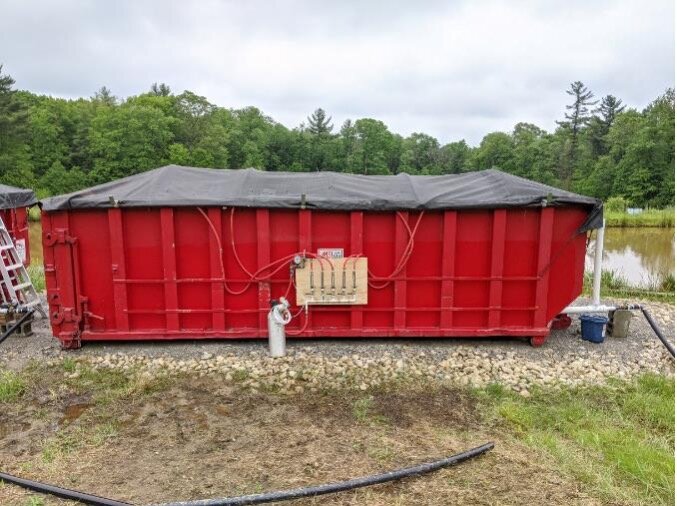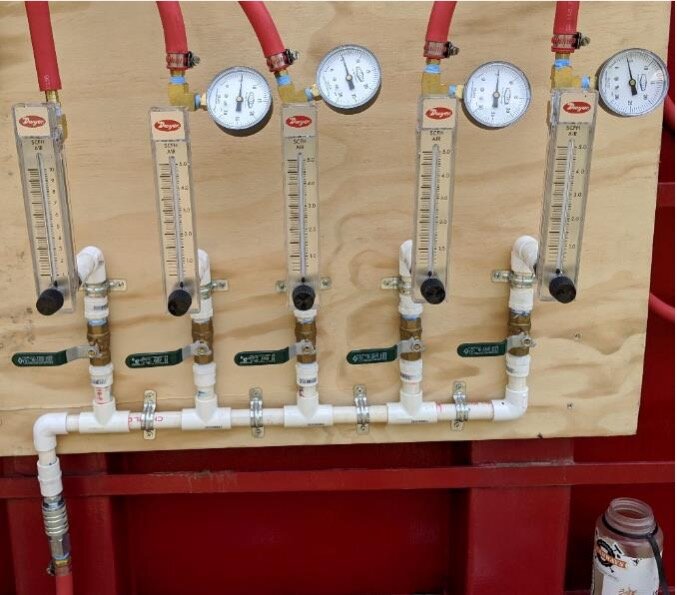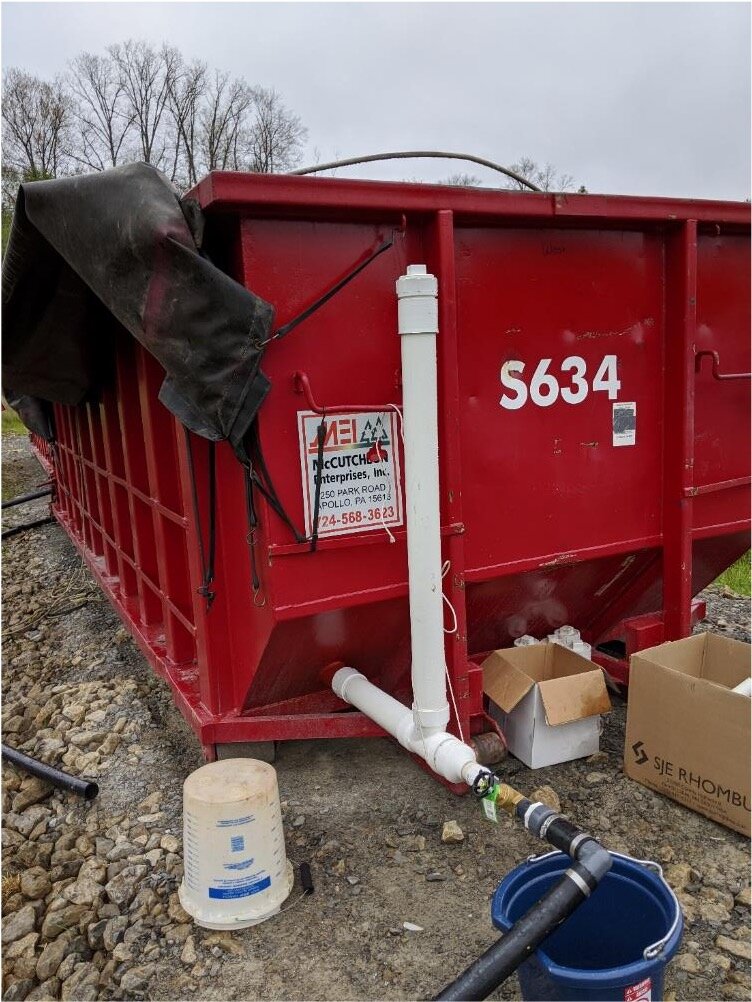Bob Hedin is like sparkling water—bubbly and, at present, driven by CO2. His experiments are hard at work in revitalized dumpsters near Pittsburgh, Pennsylvania. His passion for cutting-edge research and innovation has led to a remarkable new approach to remediating acid mine drainage (AMD). Treating AMD for the removal of metals is a challenging and expensive process. The existing best available technologies, such as lime-driven mine water treatment plants, have significant annual costs, large carbon footprints, and challenging maintenance requirements.
Bob Hedin
Hedin has worked in mine water treatment for over twenty years. His son and business partner, Ben is following a similar path as a geochemist and recently received his doctorate from the University of Pittsburgh. Together they have created a method for maximizing the efficacy of limestone in neutralizing acidic water.
After attending the Silverton Innovation Expo in 2018, Hedin saw a gap in the Small Business Innovation Research (SBIR) program, an Environmental Protection Agency (EPA) grant. In order to apply for the funding, the applicant must choose their topic area from an EPA list. They had water pollution, but not specifically mining and reclamation. He suggested they add it, and whether it was his doing or not, two years later mining was on the list. He applied for the SBIR funding and was granted a Phase I research grant in early 2020.
Hedin’s current project was originally tested in 1993 under the question: “Is it possible to get more alkalinity out of limestone?” Limestone has been used to neutralize acid mine drainage for decades, but according to Hedin, it could be much more effective. The alkalinity of limestone can raise the pH of water from 3 to 7.5 or 8 through passive remediation. Hedin has become the master of this technique, installing dozens of vertical flow ponds and successfully remediating AMD without the use of chemicals.
Limestone ore is often located near coal mines, making it easy to source. But the limestone only dissolves so far, leaving much of it unused. Hedin’s solution was simple: carbonate it. By adding CO2 to the limestone, significantly more of it will dissolve, therefore further neutralizing acidic water.
Bob at work
After securing the SBIR grant, the real experiment began with a more complex hypothesis: “Is the combination of limestone and CO2 as effective and cheaper than lime slurry?” Lime slurry is a suspension of calcium hydroxide in water and is the traditional method of primary treatment for acid mine drainage. Bob and Ben first used a household water carbonator and small amounts of limestone, where they found the results as expected: carbonation enhances the alkalizing ability of limestone. With just three shots of CO2, the acid mine water changed from 0mg/L of alkalinity to 250mg/L.
Carbonation Roll Off Dumpsters
In order to truly test their hypothesis, they acquired two dumpsters. They installed the plumbing and gas manifold (an 800lb canister of CO2), then added 4 feet of limestone, with 44% porosity, topped with 8 inches of compost. The acidic water enters the dumpsters and…drumroll.... the results were encouraging.
Hedin and his son completed the first experiment in August 2020 and applied and received funding for a second experiment from the EPA. Hedin notes that the cost of the carbonation is around $14,000/year, whereas the traditional lime slurry costs $100,000/year. Not only is the lime more expensive, but it leaves residuals, clogs pipes, and creates problematic sludge. Hedin’s process aims to be simple, inexpensive, and effective
In March 2021, they received the Phase II award. Bob says, “Phase I research was successful in demonstrating that carbonation of mine water increased both the amount and rate of alkalinity generation by limestone. And that the cost evaluation (competition with conventional alkaline reagents) was encouraging. Advancing to Phase II is very significant, and both Hedins are very enthused.”
Innovation is defined by these types of projects. It addresses a current method or approach with the spark of curiosity, a drive to make things better. The Silverton Innovation Expo is a playground for people like Bob Hedin. It is filled with outside-of-the-box thinkers, researchers, creators, and educators. We look forward to seeing the future of his experiment.
To learn more about Hedin’s work or to get in touch with him, please visit hedinenv.com.











